by Ashley Carter
Share
In today’s fast-paced scientific environment, laboratories often grapple with two crucial questions: What is a LIMS system, and why does my laboratory need one? This article aims to provide clarity on both fronts, helping you make an informed decision for your lab’s future.
A LIMS system, or Laboratory Information Management System, is a sophisticated software solution designed to streamline laboratory operations. It is a comprehensive tool for organizing sample intake, capturing test data, ensuring traceability, and tracking workflows throughout your laboratory processes. In essence, a LIMS system acts as your laboratory’s digital backbone, supporting efficiency and accuracy in all operations.
Modern LIMS systems are typically browser-based and hosted on secure cloud infrastructure, offering optimal accessibility and robust security measures. This cloud-based approach allows for seamless integration into existing laboratory workflows while minimizing IT overhead.
Now that you have a basic understanding of what a LIMS system entails, the next step is determining whether your laboratory truly needs one. To aid in this decision-making process, we’ve developed four key topics that will help you assess your laboratory’s need for a new LIMS system.
1. Growth: Adapting to New Tests, Data, And Expanding Needs
In the dynamic world of laboratory operations, stagnation is not an option. Growth, whether for commercial or captive laboratories, hinges on the ability to adapt to change. This adaptation often manifests in new testing methodologies, expanded material testing capabilities, or the need to capture new data points about specific tests, samples, or orders. Therefore, to maintain market relevance or support evolving production lines, laboratories must epitomize flexibility.
However, this necessary flexibility can be hampered by outdated or inflexible LIMS systems. Laboratories using such systems may face:
- Delays and increased costs due to required system modifications
- Forced workarounds in unsupported or non-LIMS environments
- Reliance on staff memory for special data entry procedures
- Overloaded data fields becoming catch-alls for diverse information
- Manual, off-system processes for new tests that can’t be integrated
If these scenarios resonate with your laboratory’s current situation, it may be time to consider implementing a new LIMS system. When evaluating options, prioritize LIMS systems that offer user configurability. This feature ensures that not only can you address immediate changes, but you’ll also be equipped to handle future modifications swiftly, without the need for extensive coding interventions.
2. Traceability: Ensuring Comprehensive Data Tracking
Traceability is a cornerstone of laboratory accreditation and a critical focus during audits. Additionally, the value of test results is intrinsically linked to their traceability—from the final result back to the original sample and order. Therefore, results must be readily identifiable by both the laboratory and the laboratory’s clientele. In today’s complex laboratory environments, traceability extends beyond just sample lineage. Some of the other areas it encompasses are:
- Equipment used for each test
- Personnel who conducted the tests
- Precise timing of test execution
Maintaining this level of detailed traceability poses significant challenges for laboratories relying on Excel-based systems or legacy LIMS that were designed for simpler, less demanding environments.
If your laboratory is grappling with issues related to sample or test-level traceability, or if you’re aiming to achieve certification to ISO or perhaps a customer’s requirements, implementing a modern LIMS system can be the solution.
By leveraging a sophisticated LIMS system, you can confidently navigate complex traceability requirements. The system acts as a reliable backbone, automatically populating critical fields and maintaining a detailed audit trail. This not only enhances your laboratory’s credibility but also significantly reduces the risk of human error in traceability documentation.
3. Prioritization: Optimizing Sample Processing Efficiency
Improving efficiency and productivity is a critical objective for any laboratory. For commercial laboratories, enhanced testing speed and efficiency translates to increased capacity for customer requests. In captive laboratories, faster turnaround times enable production lines to create and ship materials more rapidly. A key component in improving turnaround time is ensuring that testing is conducted in a prioritized manner—essentially, that laboratory personnel are focusing on the right tasks at the right time.
Laboratories utilizing outdated LIMS solutions or home-grown systems that lack integrated prioritization tools often face challenges in this area. Their methods for ensuring accurate prioritization can be:
- Scattered and limited in effectiveness
- Heavily reliant on manual processes
- Inflexible and resistant to necessary changes
- Prone to communication breakdowns across team members
A modern LIMS system addresses these challenges by offering robust prioritization tools. For instance, advanced LIMS systems provide:
- Prioritization features integrated directly into the workflow
- Real-time updates to laboratory status boards
- Unified priority lists accessible to all team members
- One-click priority updates by laboratory managers
These features ensure that all laboratory personnel work from the same, up-to-date priority list, changes in prioritization are communicated instantly across the entire team, and laboratory managers can adjust priorities with confidence, knowing the entire lab will immediately have the updated information. This comprehensive approach to prioritization management through a LIMS system fosters a more coordinated and responsive laboratory environment.
4. Data Management: Streamlining Information Access and Analysis
One of the most critical indicators that a laboratory needs a new LIMS system is challenges with data management. Excel-based systems or outdated LIMS solutions often require test data to be saved across various spreadsheets or folders. While this approach might have been sufficient initially, over time, as complexity increases, it becomes increasingly problematic.
Key issues with outdated data management systems include:
- Time-consuming data extraction
- Difficulty in querying results and fields across all tests
- Challenges in analyzing correlations between different test results
- Inability to easily track how changes in one sample affect results in another
If your laboratory is grappling with these data management issues, it’s a strong indication that implementing a new LIMS system should be a priority. Modern LIMS systems offer robust solutions to these challenges:
- Centralized data storage: All data is stored in a single, searchable database
- Advanced querying capabilities: Users can create complex queries without coding knowledge
- Intuitive interfaces: Systems like Wavefront LIMS allow natural language queries directly from the LIMS interface
- Real-time data accessibility: As your lab captures data, it’s immediately available for in-depth analysis
By implementing a LIMS system with advanced data management capabilities, laboratories can transform their approach to information handling. This not only saves time and reduces frustration but also unlocks the full potential of your laboratory’s data. With easier access to comprehensive data sets, your team can focus on deriving insights and driving innovation rather than struggling with data retrieval.
Conclusion: Empowering Your Laboratory with a Modern LIMS System
After examining the four critical areas where laboratories often face challenges – Growth, Traceability, Prioritization, and Data Management – it’s clear that a modern LIMS system can be transformative for laboratory operations. If your laboratory is experiencing difficulties in any of these areas, it may be time to consider implementing a new LIMS system.
Wavefront LIMS stands out as a leading provider of LIMS solutions, offering a comprehensive system designed to address these key challenges:
- Adaptability for Growth: Our user-configurable structure allows your lab to stay current and future-ready. Users can make changes to fields, add new tests, and update workflows directly from the LIMS interface, ensuring greater control and reduced support costs.
- Robust Traceability: Wavefront LIMS is built with accreditation support in mind, integrating auditing, traceability, and user security throughout the system.
- Efficient Prioritization: Features like the laboratory status board help communicate priorities and improve overall efficiency.
- Advanced Data Management: Our powerful search module enables intuitive, natural language queries, making data retrieval and analysis more accessible than ever.
Take the next step in optimizing your laboratory operations. Discover how Wavefront LIMS can support your specific needs and elevate your laboratory’s performance. Schedule a demo of Wavefront LIMS today and see firsthand how our LIMS system can transform your laboratory’s efficiency, accuracy, and data management capabilities. Don’t let outdated systems hold your lab back – embrace the future of laboratory information management with Wavefront LIMS.
STAY IN THE LOOP
Subscribe to our Free Content
Learning about LIMS is a monthly article series where Wavefront shares questions that have come up throughout our interactions with a range of individuals and customers. We do our best to provide information about each topic to help people learn more about LIMS.
Sign up here to be added to our mailing list and receive these articles directly in your inbox.
In today's rapidly evolving laboratory environment, effective data management has become increasingly crucial for maintaining operational excellence and competitive advantage. Modern laboratories generate an unprecedented variety of data types, each requiring specific handling protocols and storage considerations. A robust Laboratory Information Management System (LIMS) serves as the cornerstone of efficient laboratory operations, providing comprehensive solutions for data complexity, regulatory compliance, and long-term data integrity while ensuring seamless workflow integration.
Laboratory staffing shortages have become a critical challenge across industries. Learn how LIMS features and automation helps laboratories maintain high standards and increase efficiency, even with reduced personnel. Wavefront LIMS provides comprehensive solutions for workflow automation, knowledge transfer, and staff development - enabling your laboratory to thrive despite staffing constraints.
In an era of increasing complexity and rising performance expectations, laboratories must do more with less. Discover how a Laboratory Information Management System (LIMS) can transform operational challenges into competitive advantages, turning your lab from a cost center into a strategic asset.
In an increasingly competitive and regulated laboratory environment, implementing a robust Sample Management Software solution is essential for driving operational excellence. A comprehensive Laboratory Information Management System (LIMS) streamlines sample tracking, enhances data integrity, facilitates compliance adherence, and unlocks powerful analytics for continuous improvement. Discover how to harness the transformative potential of LIMS to position your laboratory for long-term success.





